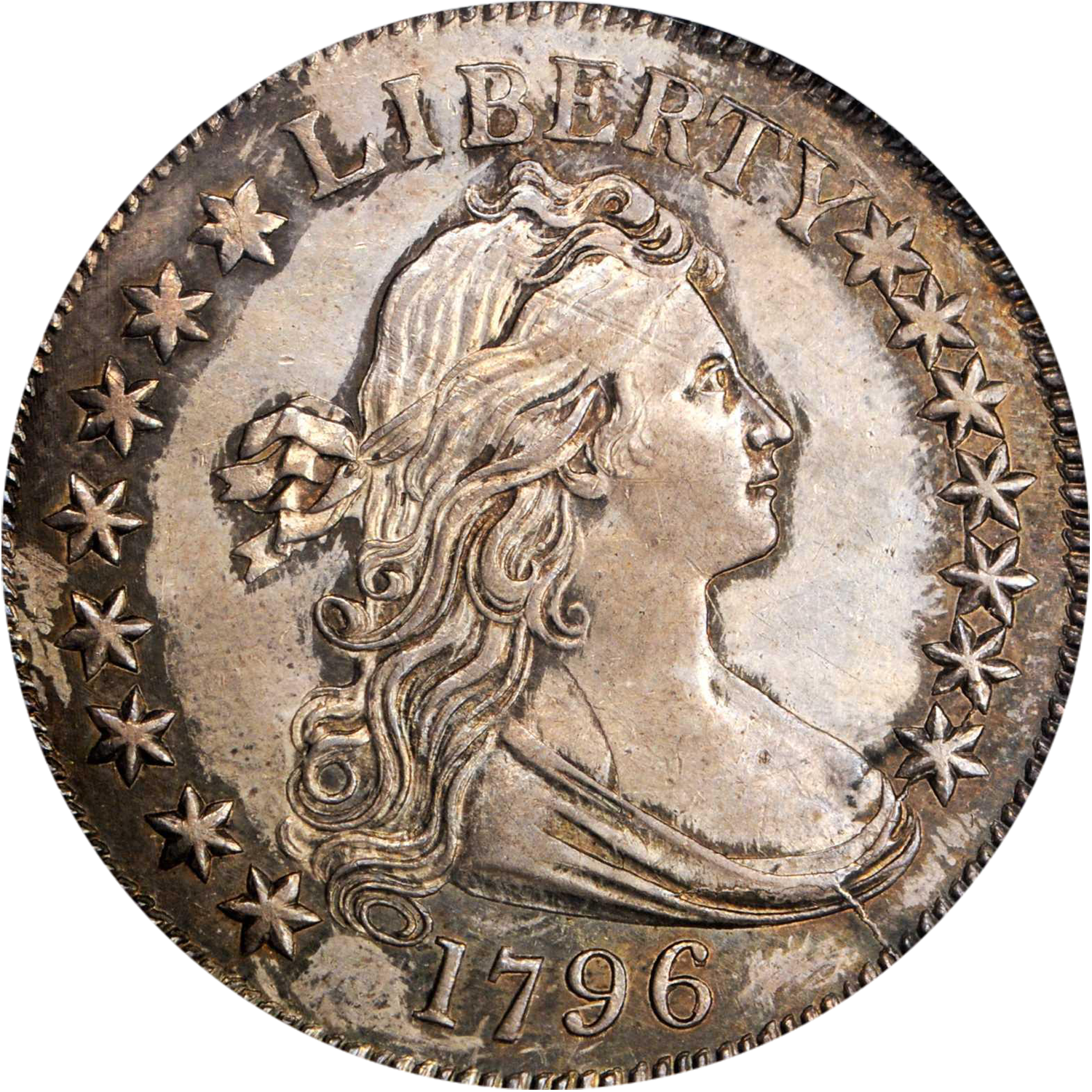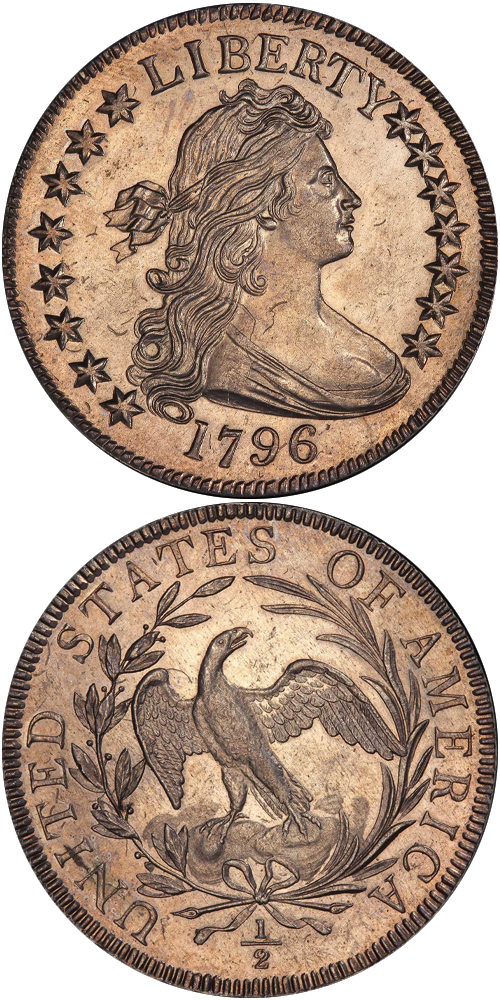1796 Draped Bust Half Dollar
15 Stars
Just 3,918 half dollars were struck of this design type, representing the mintages of 1796 and 1797. The typical 5-6% survival rate of these coins would amount to somewhere around 200 specimens extant in all grades, which holds up with contemporary population estimates. The vast majority of known 1796 and 1797 half dollars are well worn, but such is the demand from type collectors that even nearly slick examples and ones with heavy damage bring tens of thousands of dollars. Though the preponderance of survivors are in low grades, a small number of Mint State examples are known, perhaps as many as 10 from the 1796 issue. PCGS has certified just six examples in Mint State for the entire date, combining both the 15 Star and 16 Star obverses, the only two varieties known.
The 15 Star obverse type comes from the short-lived plan to place one star on the obverse for each state in the Union. Abandoned after the 1796 statehood of Tennessee, when obverses of silver coins were growing untenably crowded, the 15 Star issue would represent the statehood of Kentucky. The half dollar issues of 1794 and 1795 all feature 15 stars. After attempting to make a 16 Star obverse die later in 1796 to mark the entry of Tennessee, the 1797 half dollars returned, anachronistically, to the 15 Star arrangement, possibly because that die had been made in 1796 but just awaited the placement of the date. After this Small Eagle type, all future half dollars would include just 13 obverse stars, representing the original states.
The example to the left was sold by Stack's Bowers Galleries in the D. Brent Pogue Part I Auction, where it realized $587,500.
1796 15-Stars Draped Bust Half Dollar Auction Highlights
 PCGS SP-63 Sold for $587,500 View Lot 1100 |  PCGS MS-63 Sold for $367,187 View Lot 2063 |  PCGS MS-62+ Sold for $312,000 View Lot 4084 |






